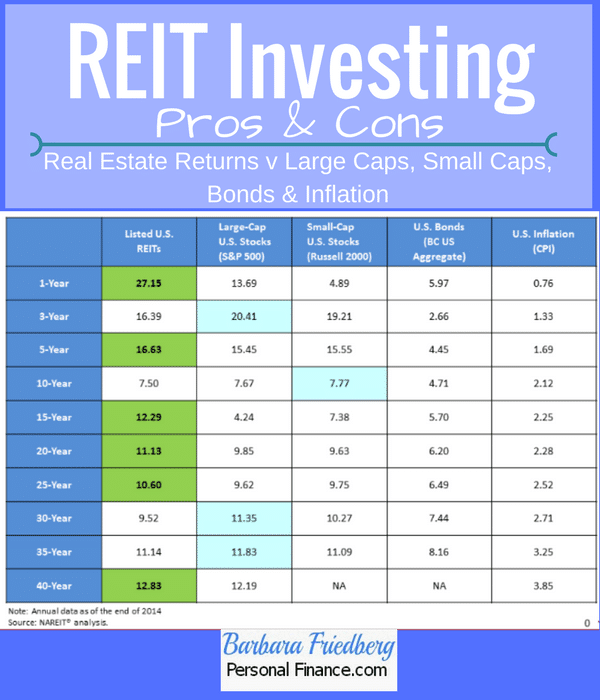- Sorularınız mı var?
M3 Money Supply Definition, Factors, Calculation in USA & India
Contents:


In its public releases, the Fed generally refers to the money supply as the money stock. It controls interest rates by setting the key rates that it charges to the nation’s banks for the overnight loans of government money that keep the banking system running. The rates for all other loans are derived from those federal lending rates.
Lenders too are unwilling to take risks as slowing discretionary spending slows demand for manufactured and industrial goods. Perpetrators of spam or abuse will be deleted from the site and prohibited from future registration at Investing.com’s discretion. Don’t Monopolize the Conversation.We appreciate passion and conviction, but we also believe strongly in giving everyone a chance to air their thoughts.

For example, a business may periodically transfer $10,000 from a money market account to a checking account. This transfer would increase M1, which doesn’t include money market funds, while keeping M2 stable, since M2 contains both accounts. M2 is a measure of the money supply that includes cash, checking deposits, and other types of deposits that are readily convertible to cash such as CDs. D. M2 consists of all cash in circulation plus money market mutual funds. These are funds that invest in short-term, low-risk securities and are designed to be highly liquid.
India M3 Money Supply
It consists of demand deposits of the public held by the commercial banks. Demand deposits are those deposits that one can encash by furnishing cheques. Measure of the money supply and net time deposits with the banks. Time deposits are those deposits that have a specified period of term for maturity and interest rates.
In the most simple language, Money Supply is Currency in Circulation plus Deposits in Commercial Banks. It is anything that people exchange for obtaining their basic requirements such as food and shelter etc. Money also adds to the efficiency of an economy by enabling smooth financial transactions. Thus, determining the flow of money in the economy is crucial for boosting macroeconomic performance. The velocity of money is a measurement of the rate at which consumers and businesses exchange money in an economy.
By the medieval period, most money consisted of coin made from silver or gold. Thus, the money supply was mostly coin, at times supplemented by bullion, bills of exchange and other valuable commodities. A bill of exchange is an order, in writing, requiring payment to a specified person or bearer at a specified time. This includes all paper currency and coins that are in the hands of the public. Supply of money is only that part of total stock of money which is held by the public at a particular point of time.
There seems to be a positive relationship between the growth of the M3 money supply and that of inflation. It means that a deficient M3 money supply can lead to a negative impact on the other variable. Contemporaneous reserves are a form of bank reserve accounting that requires a bank to maintain enough reserves to cover all deposits made during a week. M2 is all of M1 plus money invested in short-term assets that mature in less than a year, like some certificates of deposit. The Federal Reserve decided that it added no real information of importance to the numbers and was no longer useful in its analysis.
What is meant by Monetary Aggregate?
A regular bank savings account, for example, is a money equivalent. The account holder can convert those savings to cash at any time and instantly. In such situations, the central banks will introduce a contractionary monetary policy to reduce consumer spending. It is usually done by increasing interest rates on consumer loans. Hence, customers will stop borrowing and have to cut down on spending. Commercial bank money (M1-M3)– obligations of commercial banks, including current accounts and savings accounts.
M2 Money Supply: Definition, Calculation, Impact on the Economy – Coinspeaker
M2 Money Supply: Definition, Calculation, Impact on the Economy.
Posted: Sun, 19 Mar 2023 07:00:00 GMT [source]
In money supply m3 includes, Reserve Bank of India , measures the money supply and publishes it on a weekly or fortnight basis. M3 can be thought of as a congregation of all the other classifications of money plus all of the less liquid components of the money supply. This equal weighting can be considered a shortcoming of the M3 measurement of the money supply, which is why it is no longer used as a true measurement of the money supply any longer. Therefore, without quantitative easing, we may have seen a bigger fall in the money supply and a deeper recession. M4 is a key statistic because it can illustrate the underlying strength of economic activity. When the economy went into recession, we see a sharp fall in M4 growth from 15% a year to negative growth in mid-2008.
Effect of Money Supply on the Economy
Important determinants of money circulation and supply are high-powered money, level of commercial bank reserves, reserve ratio, and liquid cash held by the public. A monetary base is the total amount of a currency in general circulation or in the commercial bank deposits held in the central bank’s reserves. Commercial bank money – obligations of commercial banks, including current accounts and savings accounts. M1, also called narrow money, is often synonymous with “money supply” in reports from the financial media.
Monetary developments in the euro area: February 2023 – European Central Bank
Monetary developments in the euro area: February 2023.
Posted: Mon, 27 Mar 2023 07:00:00 GMT [source]
The U.S. dollar has been declared by fiat to be legal tender by the federal government; hence it is known as fiat money. The money supply is the sum total of all of the currency and other liquid assets in a country’s economy on the date measured. The money supply includes all cash in circulation and all bank deposits that the account holder can easily convert to cash. Retirement account balances and time deposits above $100,000 are omitted from M2. It is often referred to as an intermediate measure because it is broader than M1 but not quite as broad as M3.
Currently highlighted
Variations of the money supply number take into account non-cash items like credit and loans. Full BioSuzanne is a content marketer, writer, and fact-checker. She holds a Bachelor of Science in Finance degree from Bridgewater State University and helps develop content strategies for financial brands. L3 – L2 + + Public deposits of non-banking financial companies. L2 – L1 + +Term deposits with term lending institutions and refinancing institutions + Term borrowing by FIs + Certificates of deposit issued by FIs. In this article, we mainly concentrate on the new monetary aggregates.
Economists study it as a parameter to determine an economy’s total money supply. Based on M3 central bank used to drive monetary policy to regulate rising prices, consumption, expansion, and liquidity over the medium to long term. M2 includes all of M1 plus savings deposits and certificates of deposit, which are less liquid than checking accounts.
Money Supply is total stock of Money in Circulation with public at a particular point of time. Money Supply is the total stock of Money in Circulation with public at a particular point of time. It is total stock of Money in Circulation with public at a particular point of time. The recent increase reflects higher cash withdrawals by depositors to meet needs during the lockdown period and also to safeguard themselves against salary cuts or job losses. Since the end of March, 2020 currency held by the public increased by 8.2%.
Reserve money is also called central bank money, monetary base, base money, or high-powered money. It is the base level for the money supply or the high-powered component of the money supply. What makes money supply of utmost importance is the fact that it regulates the growth of an economy.
- However, it has increased as it was measured at around 20.41 in May 2021.
- RBI publishes figures for four alternative measures of money supply, viz.
- With the advent of cryptocurrencies, our measures of money supply are likely to be very different in the future.
- MO is the total amount of paper money and coins in circulation, plus the current amount of central bank reserves.
- Investopedia requires writers to use primary sources to support their work.
Level of commercial bank reserves – The central bank mandates commercial banks to hold a fixed percentage of deposits as reserves in case of any emergency. Banks lend the excess reserve amount to consumers, increasing money circulation. The monetary base is a highly liquid form of money, which includes currency notes, coins, and commercial bank reserves. The supply of money is closely related to inflation and consumption. Therefore, the government, especially a country’s central bank, controls the circulation of money through its monetary policy. The supply of money measurement include M0, M1, M2, M3, and M4 types, based on its liquidity.
Gross capital formation also fell by 7% in the March, 2020 quarter. M3 money supply increased by 6.7% in the first five months of 2020 compared with the same period last year. This number is multiplied by the amount of reserves to estimate the maximum potential amount of the money supply. For example, from Rs.100 can be multiplied by 5 to generate Rs.500 money supply if Reserve Ratio is 1/5 (20%) or when Money Multiplier is 5. When Reserve Ratio is 1/4 (25%) or when Money Multiplier is 4, that would generate only Rs. 400 as money supply. It is a major liability component of a central bank’s balance sheet.
Monetary developments in the euro area: January 2023 – European Central Bank
Monetary developments in the euro area: January 2023.
Posted: Mon, 27 Feb 2023 08:00:00 GMT [source]
An increase in the money supply brings down the interest rates, which leads to a rise in investments by the people. A decrease in the money supply will have the opposite impact. Thus, its management becomes an essential requirement for achieving economic development and price stability.
- It is also reported weekly and monthly by the Federal Reserve.
- For the Fed’s purposes, this is “near money.” That is, the funds cannot be used as a medium of exchange and they are not instantly convertible to cash.
- Again, for clarification, it should be noted that some countries (e.g., UK) report M4, a similar, but not quite identical measure to M3.
- To understand the money supply in the economy RBI uses monetary aggregates like M0, M1, M2, M3 etc.
- In the West, paper money was derived from the use of silver and gold.
This allowed the goldsmith to issue additional “receipts” to those who wanted to borrow money. By the late Renaissance, the issue of “receipts” or “notes” by goldsmiths had become accepted. Together with coin, such notes now made up the money supply.
In every country, the central bank monitors and regulates the flow and circulation of money. They increase or decrease the supply based on the economic situation through the monetary policy and cooperate with commercial banks and other financial institutions. M1 is made up of notes and coin and several other financial instruments that the general public may not consider to be money. However, the Federal Reserve includes them because they are used as a medium of exchange and thus, on that account, perform a monetary function.